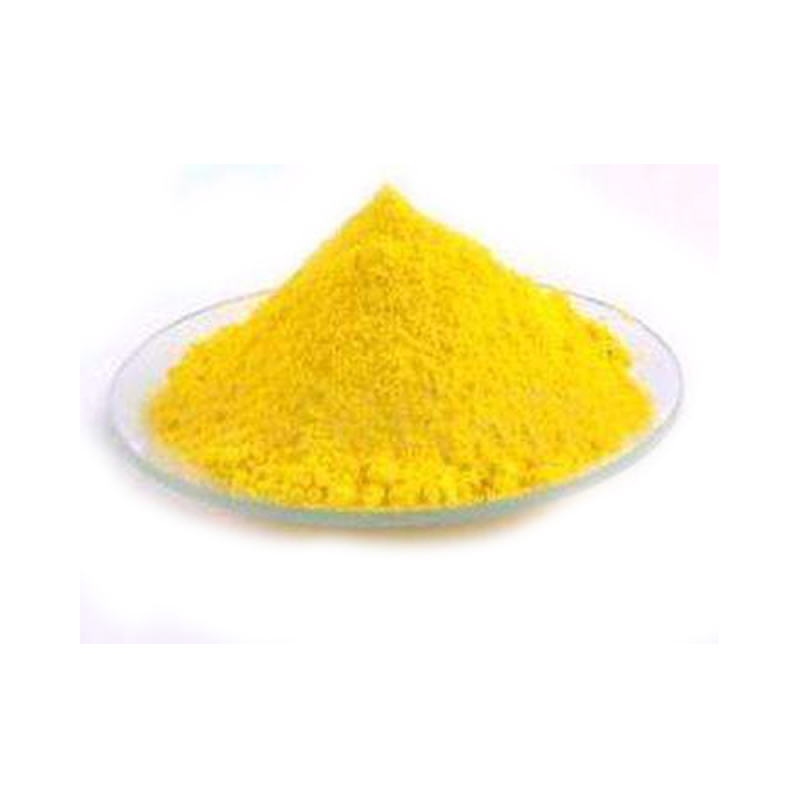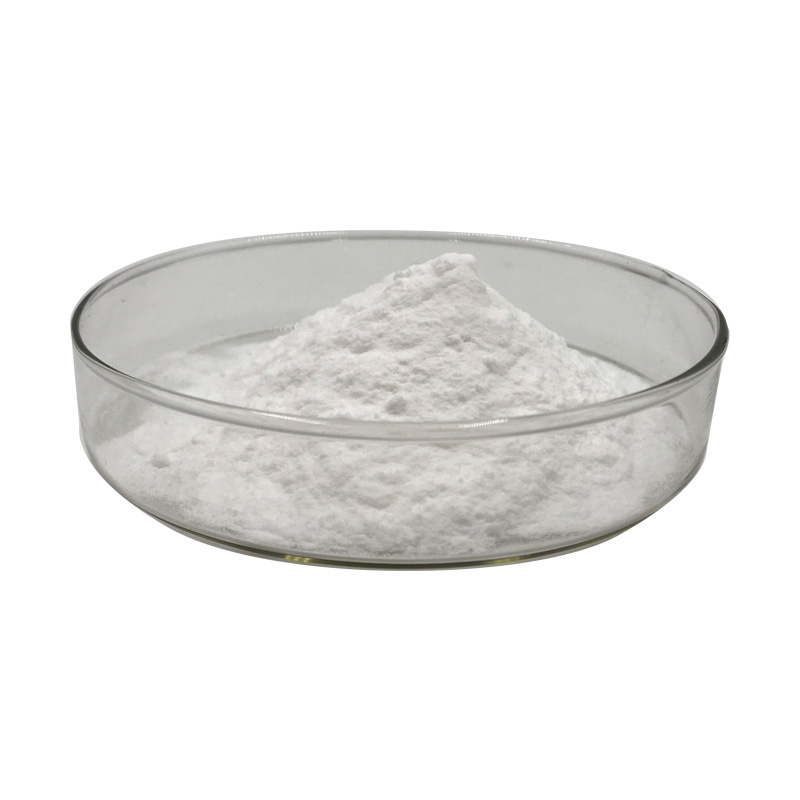Products Description of 2-Bromoethanol CAS#540-51-22-Bromoethanol is a colorless or light yellow hygroscopic liquid with relatively stable and toxic chemical properties.
Contact Now
Products Description of 1-Butylpyrrolidin-2-oneCAS#3470-98-2Colorless liquid1-Butylpyrrolidin-2-one Chemical PropertiesBoiling point 137 °C / 28mmHgdensity 0,96 g/cm3vapor pressure 13Pa at 25℃refractive index 1.4640 to 1.4660storage temp. under inert gas (nitrogen or Argon) at 2-8°Csolubility Chloroform (Slightly)pka-0.41±0.20(Predicted)form Oilcolor ColourlessWater Solubility 1000g/L at 20℃InChIInChI=1S/C8H15NO/c1-2-3-6-9-7-4-5-8(9)10/h2-7H2,1H3InChIKeyBNXZHVUCNYMNOS-UHFFFAOYSA-NSMILESN1(CCCC)CCCC1=OLogP1.265 at 20℃CAS DataBase Reference3470-9
Contact Now
Products Description of Saccharin CAS#81-07-2Pure saccharin is a non-toxic, non-caloric, non-nutritious sweetener that is not absorbed by the human body. Taking advantage of its sweet taste, it is used as a food additive to replace sugar. As a food additive, saccharin has no nutritional value to the human body except that it causes a sweet feeling in the taste buds and the sweetness of the taste can meet the requirements of consumers.
Contact Now
Products Description of Aluminium 2-ethylhexanoateCAS#30745-55-2Used as thickener for printing inksAluminium 2-ethylhexanoate Chemical PropertiesFp >177°Csolubility very faint turbidity in hot 1mol/L NaOHform Powdercolor whiteWater Solubility moderately solubleInChIKeyITXFWNWNWXSDBB-UHFFFAOYSA-KEPA Substance Registry SystemAluminum, bis(2-ethylhexanoato-.kappa.O)hydroxy- (30745-55-2) Safety InformationRisk Statements 36/37/38Safety Statements 24/25RIDADR 1325HazardClass 4.1PackingGroup IIIHS Code 29319090Factory and Equipment
Contact Now
Products Description of 2-Dimethylaminoisopropyl chloride hydrochloride CAS#4584-49-0Hydrochloride salt of 2-Dimethylaminoisopropyl Chloride, used in the synthesis of analogues of lipophilic chalcones, which act as antitubercular agents.2-Dimethylaminoisopropyl chloride hydrochloride Chemical PropertiesMelting point 187-190 °C(lit.)storage temp. Store below +30°C.solubility 2000g/lform Crystalline Powdercolor White to light creamPH5-6 (500g/l, H2O, 20℃)Water Solubility 2000 g/L (20 º C)Sensitive HygroscopicBRN 3670215InChIInChI=1S/C5H12ClN.ClH/
Contact Now
2-Ethylhexyl Nitrate CAS#27247-96-7Mainly used as cetane number improver for diesel fuel. Adding an appropriate amount of 2-ethylhexyl nitrate to diesel can significantly increase the cetane number of diesel and improve the combustion performance of diesel.
Contact Now
Products Description of 2-Mercaptobenzothiazole CAS#149-30-4Pale yellow monoclinic needles or flaky crystals with an unpleasant odor.
Contact Now
Products Description of 2-Ethoxybenzoic acid CAS#134-11-2Colorless oily liquid. Melting point 20.7℃, boiling point 174-176℃ (2.0kPa), relative density 1.105, refractive index 1.5400.
Contact Now
Products Description of 2-Mercaptobenzimidazole CAS#583-39-1Antioxidant MBI, 2-mercaptobenzimidazole, is a thiol-substituted nitrogen heterocyclic compound and an important class of pharmaceutical intermediates, widely used in medicine, pesticides, chemicals and other fields.
Contact Now
Products Description of 2-Aminoquinoline CAS#580-22-32-Aminoquinoline is a pharmaceutical intermediate and synthetic material intermediate. It is a white to light yellow powder crystal. It is soluble in chloroform and methanol. It is flammable and produces nitrogen oxides when burned.
Contact Now
Products Description of 2'-Fucosyllactose CAS#41263-94-9 BASF’s Newtrition® brand for human nutrition launched 2’-fucosyllactose (2’-FL), the largest human milk oligosaccharide (HMO) product, to the infant nutrition market in early 2019. HMOs are a unique class of carbohydrates that occur naturally in breast milk and are the second most abundant nutrient in breast milk after fat and lactose.2’-fucosyllactose is produced by microbial fermentation of genetically modified Escherichia coli strains.
Contact Now
Products Description of Cellulose diacetate CAS#9035-69-2White powderCellulose diacetate Chemical PropertiesEPA Substance Registry SystemCellulose, diacetate (9035-69-2)Factory and Equipment ShowFast delivery timeInventory 2-3 working days New production 7-10 working days
Contact Now
Products Description of 5-Methoxy-2-Tetralone CAS#32940-15-15-Methoxy-2-tetralinone is a chemical intermediate with a molecular formula of C11H12O2 and a molecular weight of 176.21.5-Methoxy-2-tetralone Chemical PropertiesMelting point 32-36 °C (lit.)Boiling point 165°C/10mmHg(lit.)density 1.124±0.06 g/cm3(Predicted)vapor pressure 0.059Pa at 25℃Fp >230 °Fstorage temp. Keep in dark place,Sealed in dry,Room Temperaturesolubility Chloroform, Dichloromethane, Ethyl Acetate, Methanolform Solidcolor Yellowish OrangeBRN 1451623InChIKeyMDA
Contact Now
Products Description of 2-Deoxy-D-glucose CAS#154-17-62-Deoxy-D-glucose is an anti-metabolite of D-glucose. It has the effects of interfering with the synthesis of virus-specific glycoproteins, inhibiting the proliferation of herpes simplex virus, RAN and DNA enveloped viruses, and cancer cells. At present, antiviral and anticancer drugs prepared from 2-deoxy-D-glucose have been clinically used in the treatment of herpes simplex virus and cancer, and medical health products and anti-aging cosmetics prepared from 2-deoxy-D-glucose have also been launched on the market.
Contact Now
(2-hydroxytrimethylene)bis(trimethylammonium) dichloride Chemical PropertiesMelting point 256-257 °C (decomp)Factory and Equipment ShowFast delivery timeInventory 2-3 working days New production 7-10 working days
Contact Now
Products Description of Thiourea dioxide CAS#1758-73-2Thiourea dioxide is also known as carboxamidine sulfinic acid and aminoiminomethanesulfinic acid. It is a stable compound with neither oxidizing nor reducing properties. It is precipitated from ethanol as colorless to white needle-shaped crystals or crystalline powder. It is odorless. Relative molecular weight 108.12. Relative density 1.4. Melting point 126℃ (decomposition). The solubility in water at room temperature is 2% to 3%, and the aqueous solution is neutral or weakly alkaline.
Contact Now
Products Description of 1,7-DihydroxynaphthaleneCAS#575-38-2 1,7-Dihydroxynaphthalene Chemical PropertiesMelting point 180-184 °C (lit.)Boiling point 246.06°C (rough estimate)density 1.0924 (rough estimate)refractive index 1.5418 (estimate)Fp 252 °Cstorage temp. Sealed in dry,Room Temperaturesolubility DMSO (Slightly), Methanol (Slightly)pka9.58±0.40(Predicted)form Solidcolor Beige to Dark BrownWater Solubility Slightly soluble in water.λmax335nm(Cyclohexane)(lit.)BRN 1908499CAS DataBase Reference575-38-2(CAS DataBase Reference)N
Contact Now
Products Description of Trimethyl orthopropionate CAS#24823-81-2Trimethyl orthopropionate is a chemical substance.Trimethyl orthopropionate Chemical PropertiesBoiling point 121-122 °C (lit.)density 0.944 g/mL at 20 °C (lit.)refractive index 1.397-1.399Fp 19 °Cstorage temp. Flammables areasolubility soluble in Chloroformform Liquidcolor Clear colorlessBRN 1736043CAS DataBase Reference24823-81-2(CAS DataBase Reference)NIST Chemistry ReferencePropane, 1,1,1-trimethoxy-(24823-81-2)Safety InformationHazard Codes Xi-F,Xi,FRisk Statements 36
Contact Now
Products Description of Panthenol CAS#16485-10-2Provitamin B5 is a white crystalline hygroscopic powder.
Contact Now
Products Description of 2-Imidazolidone CAS#120-93-42-Imidazolidinone is an organic compound with the molecular formula C3H6N2O.
Contact Now
Products Description of 2-Fluoro thiophenol CAS#2557-78-02-Fluorobenzenethiol is a chemical substance with the molecular formula FC6H4SH.2-FLUOROTHIOPHENOL Chemical PropertiesBoiling point 61-62 °C/35 mmHg (lit.)density 1.2 g/mL at 25 °C (lit.)refractive index n20/D 1.557(lit.)Fp 118 °Fstorage temp. 2-8°Cpka6.00±0.43(Predicted)form clear liquidcolor Colorless to Light yellow to Light orangeSpecific Gravity1.20Sensitive StenchBRN 2039768CAS DataBase Reference2557-78-0(CAS DataBase Reference)NIST Chemistry ReferenceO-fluorothiophenol(25
Contact Now
C18H36O CAS#143-28-2 Product Introduction:Meet Pure Oleyl Alcohol, scientifically identified as C18H36O and registered under the CAS#143-28-2. This Light yellow oily liquid is a critical component in a myriad of industries, offering versatility and reliability.
Contact Now
Products Description of Ethyl 2-ethylacetoacetate CAS#607-97-6Used as an intermediate of the drug rebapidEthyl 2-ethylacetoacetate Chemical PropertiesMelting point 170 °C (decomp)Boiling point 87-189 °C/743 mmHg (lit.)density 0.981 g/mL at 25 °C (lit.)refractive index n20/D 1.421(lit.)Fp >230 °Fstorage temp. Keep in dark place,Sealed in dry,Room Temperaturesolubility Chloroform (Slightly), Methanol (Slightly)pka12.02±0.46(Predicted)form Liquidcolor Colorless to pale yellowOdorat 100.00 %.
Contact Now
Products Description of 4-Hydroxy-2-butanone CAS#590-90-94-Hydroxy-2-butanone is a component of bark beetle powder used to lure and kill bark beetles. It forms a complex with a Ziegler-Natta catalyst and is used as a catalyst for the stereospecific polymerization of butadiene and an organic synthesis intermediate.
Contact Now


































